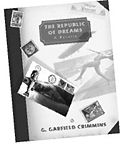It is easy—far too easy—to take aim at Frances Mayes. More friends than I would care to admit were nonplussed when I told them I was planning to review her books—sentimental memoirs that masquerade as travel writing. “They’re lite books,” one friend insisted. Well, so they are. And yet I walked away from them feeling that I had to hold Mayes accountable for all the lacunae in them, the failure to paint a full picture, the greed-for-the-good-life narrative, the arm’s length at which she holds these treasures from her readers.
Bella Tuscany: The Sweet Life in Italy by Frances Mayes (Broadway, $25) Under the Tuscan Sun: At Home in Italy by Frances Mayes (Broadway, $15)
It’s a literary formula that Peter Mayle perfected in his “Provence” books: American goes to romantic European countryside, is hamstrung by the language and baffled by the natives, is won over by the beauty of the land and gradually comes to feel the good life is an essential part of his or her bilingual soul. Thus far, I have no problem with Mayle or Mayes. It’s what happens next: Feeling compelled to write a book about it, to dangle the experience in front of others in the guise of travel writing, when actually they’re only boasting of their good fortune and comfort in the world.
Mayes’ best-selling Under the Tuscan Sun traces the story of the purchase and restoration of a Tuscan farmhouse where she and her husband spend their summers. The book is lyrical above all—endless evocations of the countryside, the food, their quaint neighbors (those wacky Italians!), their transformation of the run-down farmhouse into a paradise with extensive gardens. Description alone, no matter how beautiful, is not enough to carry any book, however, and the narrative thrust of Under the Tuscan Sun is provided by the renovation projects undertaken by Mayes and her husband and the problems they run into—loafing Italians, ferragosto (the monthlong summer holiday when all Italians disappear), the strain, oh the strain, of endless guests. I wondered what Mayes could have possibly put into Bella Tuscany, her second volume of the same stripe. It is (gasp!) the story of their first spring there.
Of the two books, Bella Tuscany is clearly the better book. Perhaps having exhausted the topic of restoration as well as some of her descriptive muscles, Mayes turns inward. She ruminates on the meaning of travel, and in a brief and stunning chapter called “Cold,” she returns with her husband to the United States to see his dying mother. Once away from Italy’s lyric stranglehold, Mayes writes deftly and cleanly; this clear, unsentimental chapter made my jaw unclench. Briefly.
That said, I objected strenuously to Mayes and her Brunello-tinted Italy. What Mayes utterly ignores in both of her books is that the simple life in Italy comes at a price—a price that is not extracted from her as an American. Although there is certainly a traditional Italian love for family and food, many Italians live simply, simply because they must. And simple is not always Zen. Sometimes it has to do with lack of money and opportunity. As a half-Italian friend of mine recently pointed out, “There are things that just can’t be done in Italy. Like start a company. Like make good money. When Italians want good jobs, they come here.” He should know; he lives with two hardworking Microsoft Italians.
And the mandate to live simply and enjoy the tide of the countryside is something Mayes clearly has the means to do. In the preface to Under the Tuscan Sun, she immediately reveals herself: “Outside my window, three men with weed machines sound like giant bees. Domenico will be arriving tomorrow to disc the terraces, returning the chopped grasses to the soil.” As in E.B. White’s “Death of a Pig,” a rumination is unintentionally interrupted by the reader’s realization of the writer’s privilege (in White’s case, a set of hired gravediggers to dispose of the pig). What I mean is money. Both Mayes and White, to their credit, participate in the landscaping and the burial, but one feels it to be more of a bit of pastoral playacting than the sheer grinding necessity to work.
This perspective is gained, obviously by such privilege. It’s easy to romanticize the slow life when you come from a culture in which the amenities are readily available. Mayes freely admits that part of the charm of Tuscany lies in the contrast between the two halves of her lives. (From autumn through spring she and her husband work like fiends in California universities.) Nothing wrong with that. But there is also a sense in which Mayes offers her books as primers for living well, and the means to—and time for—such a life are, to say the least, available to few.
There are other reasons to decline Mayes’ splendid Tuscan tour. She is fond of borrowing imagery from world religion to describe the “spiritual” value of Italy, a country of deeply Catholic people. From Under the Tuscan Sun: “I think there’s a microbe in Italian painters’ bloodstreams that infects them with the compulsion to paint Jesus and Mary.” A woman as soused with art as Mayes claims to be should have her license revoked for confusing the modern artistic impulse with the Renaissance mandate: to paint religious subjects. Mayes can render the most unsentimental scenes in sepia tones. From Bella Tuscany: “A girl shouts up to a man in the most picturesque jail.”
My criticisms reveal me as a bitter and cynical person, and I may fairly be accused of failing to accept these books in the spirit in which they are written. However, Mayes is so possessive of her Italy that it’s hard not to resist her. In both books there is the frequently implied suggestion of her insider status, her grip on the “real” Italy that few tourists approach. Her opinion of tourists, moreover, registers barely above contempt. In Under the Tuscan Sun, she describes the hours of siesta, during which Italian towns shut down completely, except for “thousands of tourists, many of whom made the mistake of eating two wedges of great sausage pizza at eleven and now have no inclination to eat anything. Instead, they wander under the unbearable sun, peeking through metal grates covering shop windows, pushing at the massive doors of locked churches, sitting on the sides of fountains while squinting into miniscule guidebooks.” Though she is quick to add, “I’ve done the same thing,” the tone is unmistakable. Since most of us only manage to experience a foreign country as tourists, this is disheartening. Bang, she closes the door. In Mayes’ lazily written world, the valleys are always sweeping, the light is always angling, and the hills are always undulating. But this Italy, she seems to say, is not available to the likes of you.
Emily Hall is a Seattle writer.






